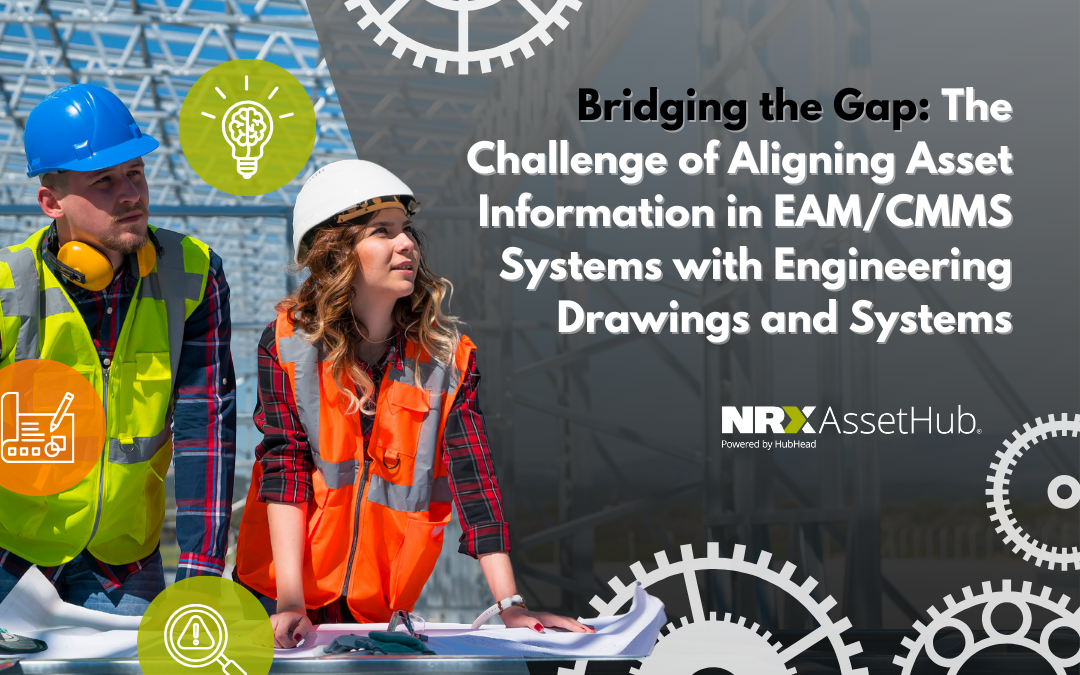In the world of asset management, maintaining a seamless flow of information is crucial for the success and efficiency of operations. Enterprise Asset Management (EAM) and Computerized Maintenance Management Systems (CMMS) play pivotal roles in streamlining processes, but a persistent challenge remains: the misalignment of asset information with engineering drawings and systems. In this blog post, we will explore the reasons behind this misalignment and discuss potential solutions to bridge the gap.

Divergent Data Sources:
One primary reason for the misalignment between EAM/CMMS systems and engineering drawings is the existence of multiple data sources. Often, organizations use disparate systems to store asset information, leading to inconsistencies and discrepancies. The lack of a standardized data management approach can result in confusion, errors, and delays in decision-making.
Legacy Systems and Outdated Drawings:
Many organizations still rely on legacy systems and outdated engineering drawings that may not be compatible with modern EAM/CMMS solutions. As technology evolves, the integration of new systems becomes challenging, and organizations may struggle to update their asset information in real-time. This creates a gap between the digital representation of assets in EAM/CMMS systems and the actual state of assets on the ground.
Communication Barriers between Departments:
Effective communication is key to aligning asset information with engineering drawings. However, in large organizations, different departments may use varied terminology and have separate workflows. This lack of standardized communication can hinder the proper exchange of information between engineering, maintenance, and operations teams, leading to discrepancies in asset data.
Incomplete or Inaccurate Data Entry:
Human error is an inherent risk in data management. Incomplete or inaccurate data entry during the asset lifecycle can contribute to misalignments between EAM/CMMS systems and engineering drawings. Without proper validation processes and checks in place, discrepancies can go unnoticed, impacting the reliability of asset information.
Limited Integration Capabilities:
Some EAM/CMMS systems may lack robust integration capabilities with engineering design tools and systems. This limitation hampers the seamless flow of data between the two, creating silos of information that hinder a holistic view of asset performance. Organizations must invest in solutions that facilitate interoperability to ensure data consistency.

Closing the gap between asset information in EAM/CMMS systems and engineering drawings is essential for optimizing asset management processes. By addressing the root causes of misalignment and adopting best practices, organizations can enhance the reliability, accuracy, and effectiveness of their asset information, ultimately leading to improved operational efficiency and reduced downtime.
How Can We Help You?
HubHead’s benchmarking service can provide valuable support. Our experienced consultants have helped numerous companies achieve excellence through comprehensive benchmarking analysis that provides a roadmap to operational excellence. To learn more about how we can help you, contact us to book a meeting or download our brochure.
Optimizing Efficiency: A Guide to Supercharging Your EAM/CMMS Systems for Productive Analysis
Unmet Expectations: The Reality of Productivity Gaps in EAM/CMMS Systems
Elevating Standards and Ensuring Consistency in EAM/CMMS Systems to Safeguard Against Critical Challenges
Share this article




